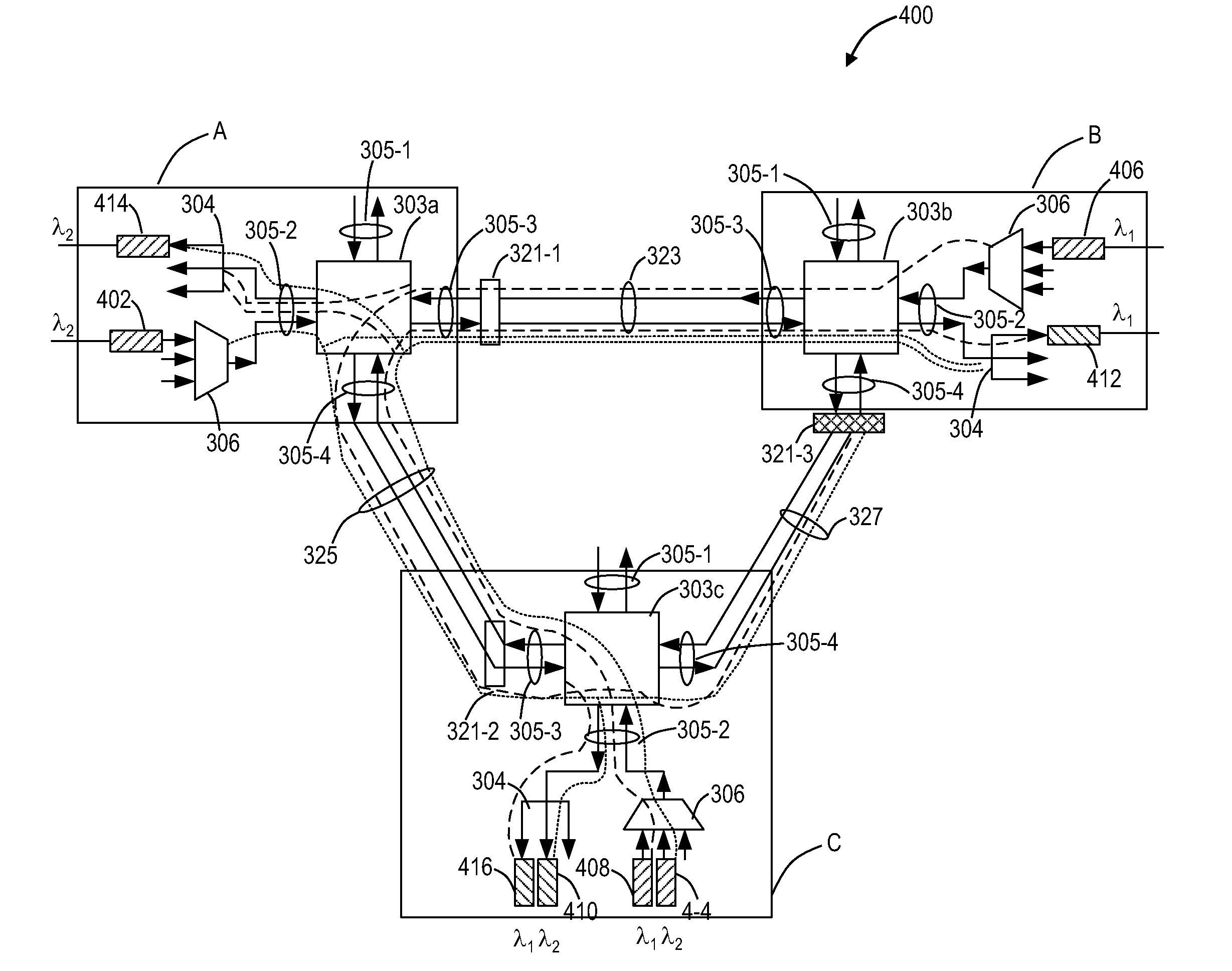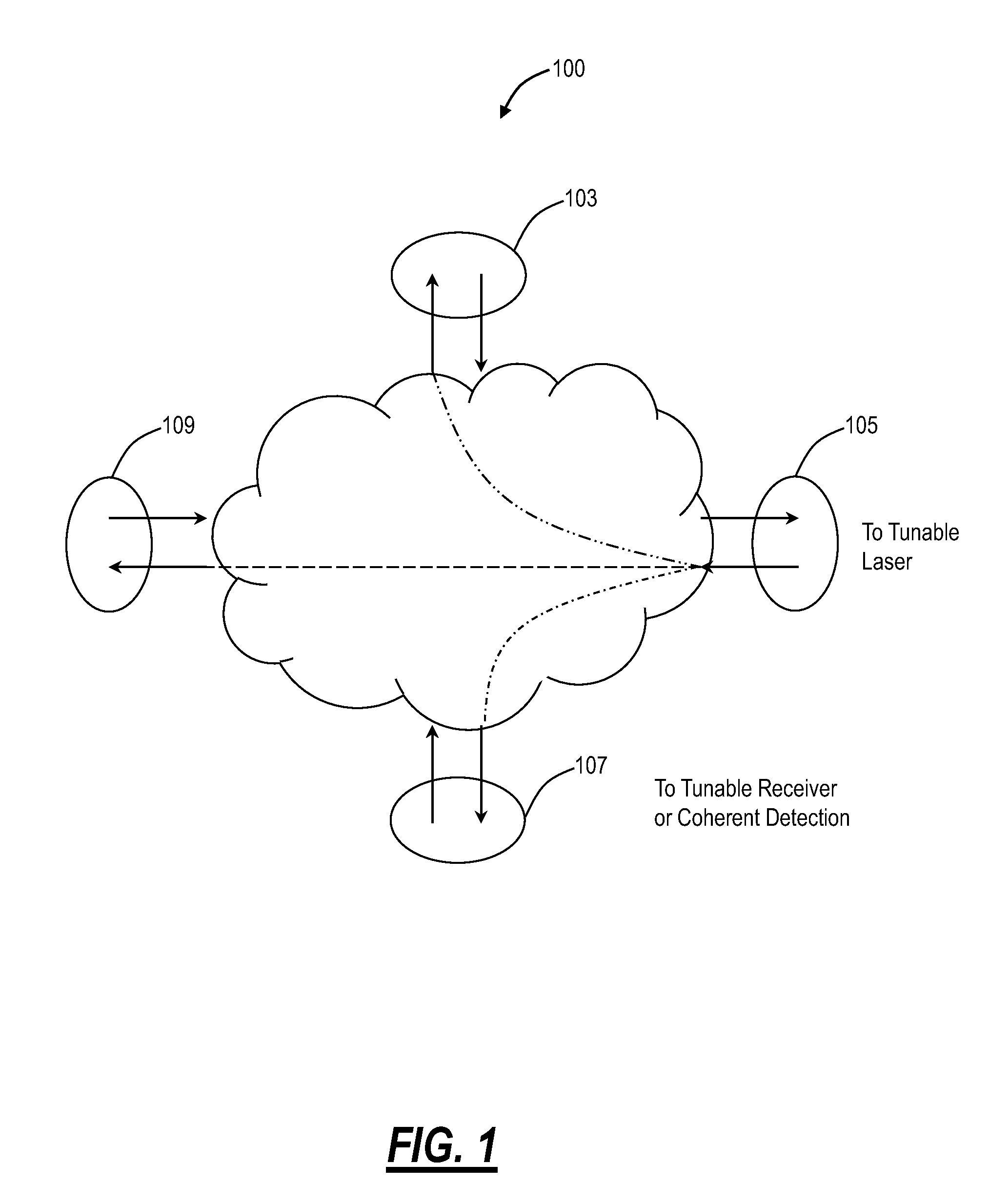Colorless, directionless, and gridless optical network, node, and method
a colorless, directionless, gridless, optical network technology, applied in the field of optical networking, can solve the problems of difficult network modification, high cost, and the likelihood of increasing the density of wavelengths on which different data signals may be transported
- Summary
- Abstract
- Description
- Claims
- Application Information
AI Technical Summary
Benefits of technology
Problems solved by technology
Method used
Image
Examples
Embodiment Construction
[0038]In various exemplary embodiments, the colorless, directionless, and gridless optical network, node, and method described herein relates to an all-broadcast optical layer where coherent optical receivers are used like a radio receiver to tune into a channel of interest with all channels available at all drop points. Advantageously, this approach does not rely on WSSs while simultaneously providing a colorless, directionless, and gridless approach. The main issue in this network approach is also its inherent advantage in that since light is broadcast everywhere, there is the potential for multiple optical paths (e.g., optical loops) which cause interference, and potentially lasing. As such, the network approach can utilize optical blocking elements enable the broadcast optical channels to nodes via a single path for each of the optical channels, i.e. the optical blocking elements prevent multiple paths by constraining each channel to a single path. As is described herein, manipu...
PUM
 Login to View More
Login to View More Abstract
Description
Claims
Application Information
 Login to View More
Login to View More - R&D
- Intellectual Property
- Life Sciences
- Materials
- Tech Scout
- Unparalleled Data Quality
- Higher Quality Content
- 60% Fewer Hallucinations
Browse by: Latest US Patents, China's latest patents, Technical Efficacy Thesaurus, Application Domain, Technology Topic, Popular Technical Reports.
© 2025 PatSnap. All rights reserved.Legal|Privacy policy|Modern Slavery Act Transparency Statement|Sitemap|About US| Contact US: help@patsnap.com



